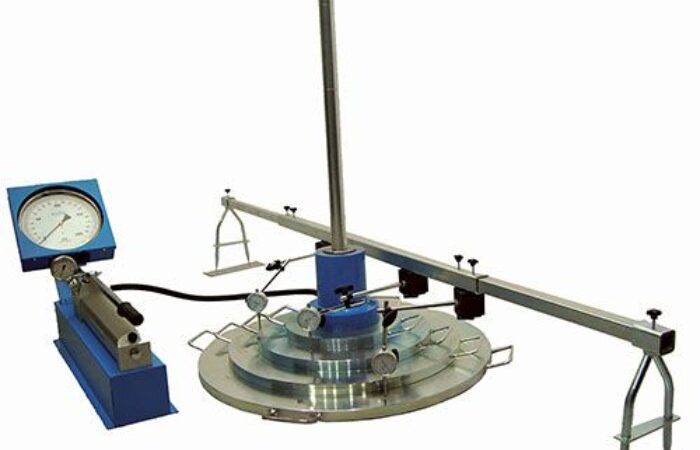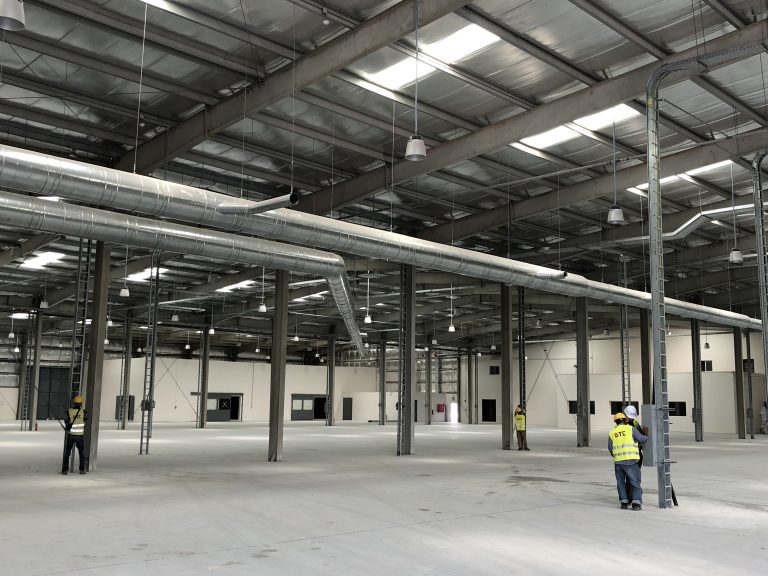Plate Load Test – Equipment, Procedure, Calculation
A plate load test is a widely used method to determine the load-bearing capacity of soils. It can be used to determine the bearing capacity of soil, and identify any areas of weakness or changes in strength over time. Plate load tests can be used to determine the foundation design parameters, such as allowable bearing pressure, maximum settlement and ultimate bearing capacity, for both shallow and deep foundations. In this blog post, we’ll discuss what equipment is required for a plate load test, how it’s performed and how to calculate the results obtained from a plate load test. We’ll also look at some common applications and benefits of using this type of testing. So read on to learn more about plate load testing!
What is Plate Load Test?
A Plate Load Test is a field test used to determine the allowable bearing capacity of soil and the likely settlement under a proposed building foundation. The test involves loading a small plate or footer at the ground surface and monitoring the settlements over time. The test is relatively simple and inexpensive, making it a popular choice for preliminary site investigations.
The Plate Load Test is typically used to:
– Determine the allowable bearing capacity of soil
– Evaluate potential settlement under a proposed foundation
– Investigate potential slope instability
– Evaluate the effects of compaction on soils
What is the plate load test?
A plate load test is a field test used to determine the bearing capacity of soils and the allowable settlement of soil under a proposed foundation. The test is typically performed by placing a heavy plate on the ground and loading it with weights until failure occurs. The test can also be used to determine the location of bearings strata, to estimate in-situ stresses, or to measure the deformability of soils.
There are two main types of plate load tests: static and dynamic. Static tests are conducted by slowly adding weights to the plate until failure occurs. This type of test is typically used for determining the allowable bearing capacity of soils. Dynamic tests are conducted by dropping a weight onto the plate from a height, and are typically used for measuring the in-situ stresses or deformability of soils.
Plate load tests are relatively simple and inexpensive to perform, making them a popular choice for testing small areas or when time is limited. However, because the results are highly dependent on site conditions, care must be taken to ensure that the test is conducted properly.
What are the types of plate load test?
There are three types of plate load tests:
1. Static plate load test
2. Dynamic plate load test
3. Pneumatic plate load test
1. Static plate load test: In this type of test, a static force is applied to the plate and the deformation of the plate is measured. This type of test is used to determine the ultimate bearing capacity of the soil.
2. Dynamic plate load test: In this type of test, a dynamic force is applied to the plate and the deformation of the plate is measured. This type of test is used to determine the dynamic properties of the soil such as modulus of elasticity and damping ratio.
3. Pneumatic plate load test: In this type of test, a pneumatic force is applied to the plate and the deformation of the plate is measured. This type of test is used to determine the compressibility and shear strength characteristics of soft soils.
How do you calculate plate load test?
When performing a plate load test, the applied load is incrementally increased until failure occurs. The test is then repeated at different increments to determine the ultimate bearing capacity of the soil. To calculate the plate load test, you will need the following information:
-The size of the plate being used (diameter or width)
-The area of contact between the plate and the soil
-The applied load at failure
-The number of failures
Using this information, you can calculate the average ultimate bearing capacity of the soil using the following equation:
(applied load at failure)/(area of contact between plate and soil)*(number of failures)
What is the difference between plate load test and CBR?
Plate load test is a field test conducted to determine the allowable bearing capacity of soil and to identify the subsoil strata layers. The test is conducted by loading a steel plate on the ground surface and measuring the settlement of soil under the plate at different loads.
CBR (California Bearing Ratio) is a laboratory test used to measure the strength of subsoils and their ability to support loads. The test is conducted by applying increasing loads on a cylindrical specimen of compacted soil until failure occurs. The CBR value is obtained by dividing the maximum applied load by the corresponding settlement at failure.
Plate Load Test – an overview | ScienceDirect Topics
A plate load test is a field test used to determine the allowable bearing capacity of soil and the thickness of underlying strata. The test is performed by loading a small plate on the ground surface and measuring the settlement. The test can be used to measure the bearing capacity of soil at different depths and to determine the thickness of underlying strata.
Plate load tests are typically used to investigate foundation conditions prior to construction. They are also used to verify the design assumptions made about soil and strata conditions. Plate load tests can be performed using a variety of equipment, including hand-held plates, vehicle-mounted plates, or large, custom-designed plates.
The procedure for conducting a plate load test is relatively simple. First, a level area is cleared and prepared for testing. A small plate is then placed on the ground surface and loaded with a known weight. The settlement of the plate is monitored over time and recorded. The test is then repeated at different depths or with different weights until an adequate understanding of the soil and strata conditions has been achieved.
Calculation of results from a plate load test is relatively straightforward. The settlement of the plate is measured at each depth or weight increment and converted into an equivalent bearing capacity value. This value can then be used to estimate the allowable bearing capacity of soil or determine the thickness of underlying strata.
Plate Load Test – Civil Engineering Portal
A plate load test is a field test used to determine the allowable bearing capacity of soil and the likely settlement under a proposed foundation.
The test involves loading a steel plate on the ground surface and measuring the settlement over time. The data from the plate load test is used to calculate the allowable bearing capacity of the soil and the likely settlements under different loads.
There are two types of plate load tests: static and dynamic. Static plate load tests are conducted by slowly applying a load to the plate until it reaches the desired level. Dynamic plate load tests are conducted by rapidly applying a load to the plate, then measuring the settlements over time.
Plate load tests can be conducted with different types of equipment, including hydraulic jacks, piston-type jacks, or weighted plates. The type of equipment used will depend on the type of soil being tested and the desired accuracy of the results.
The procedure for conducting a plate load test is as follows:
1. Prepare the testing site by clearing away any vegetation or debris. The site should be level and firm, with no loose soils that could collapse during testing.
2. Place the steel plate on the ground surface.
3. Slowly apply a Load to the Plate until it reaches its desired level, or rapidly apply a Load to generate data for Dynamic Plate Load Testing.
4a. For Static Plate Load Tests: Monitor settlements over time and record readings at regular
Plate Load Test:- Procedure, Bearing Capacity, Limitations
A plate load test is performed to determine the bearing capacity of soil and the settlement characteristics of soils. This test is usually performed on a natural ground or on an embankment fill. The test consists of loading a circular steel plate placed at the ground surface while measuring the settlements underneath the plate at different loads.
The procedure of performing a plate load test is as follows:
1. The area where the plate load test is to be conducted is cleared and leveled.
2. A circular steel plate with a diameter of around 0.6m and thickness of around 10mm is placed at the center of the clearing.
3. The plate is loaded with incremental weights until failure occurs orsettlement exceeds 25mm.
4. The settlements are measured at each load increment using 3-5 dial gauges placed around the perimeter of the plate.
5. The final results are used to calculate the ultimate bearing capacity and Settlement characteristics of soil underneath the plate.
The advantages of performing a Plate Load Test are that it is relatively simple, quick, and inexpensive compared to other methods such as Cone Penetration Tests (CPT). In addition, this test can be conducted on site without requiring any laboratory testing facilities. However, some disadvantages associated with this method include potential damage to underlying structures due to large settlements and difficulty in determining accurate settlements when there is high water content in soils.














